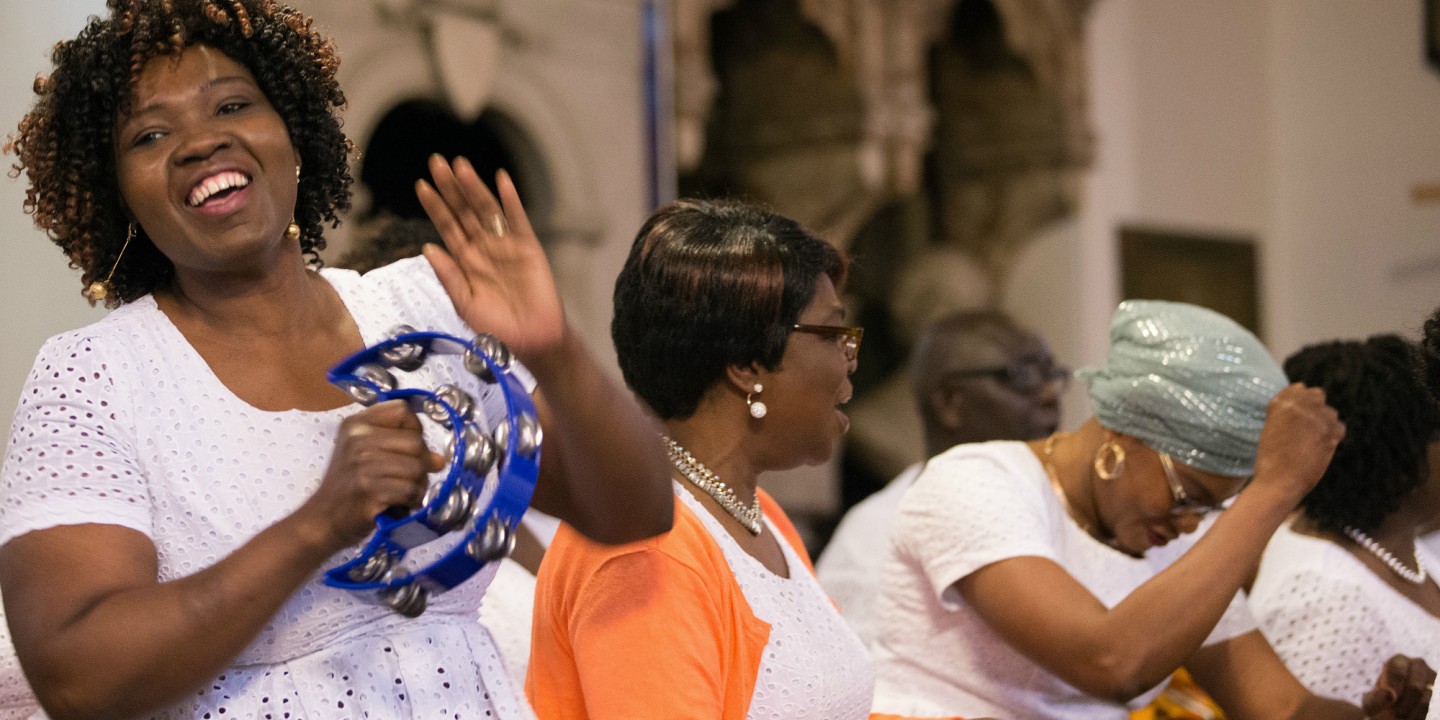Immigrants reinvigorate Methodist churches in Britain, home of tradition's founders
Congregations that might've closed their doors received an influx of Methodists from West Africa and elsewhere.

In the late 1970s, Wesley’s Chapel had 30-odd members and considered closing.
Now it has nearly 500 members and some 18,000 names in the visitor’s book from last year.
The diverse congregation at Wesley’s Chapel—built in 1778 by Methodist founder John Wesley—reflects its reputation as a place of pilgrimage for Methodists worldwide. Members include British citizens of African descent—representing Ghana, Nigeria, Sierra Leone, Gambia, Zimbabwe, South Africa, and Côte d’Ivoire—as well as Methodists from places as far away as Fiji, Tonga, and the Philippines.
“The worldwide relationships of this church are alive again and fruitful, and they’re not just about its being a place of pilgrimage,” said Jennifer Smith, superintendent minister of Wesley’s Chapel.
The story is similar at Methodist Central Hall in Westminster, where an influx of global Methodists makes the difference both in size and vitality, said Martyn Atkins, superintendent minister.
“If London was not a global city, profoundly renewed and resourced by immigration, by people who are devout Christians,” Atkins said, “this church would have about 55 members.”
Methodist Central Hall in Westminster was one of 40 central halls originally built by Wesleyan Methodists to reconnect with urban areas. This perhaps was the grandest of the central halls, located in a setting of prestige and power—and one known to every London tourist: opposite Westminster Abbey and near the Houses of Parliament and Big Ben.
Read our latest issue or browse back issues.
A campaign to raise “one million guineas [each worth about £1.05 or $1.48 in today’s currency] from one million Methodists” did just that in 1904. The Viennese Baroque building, opened to the public in October 1912, includes a “great hall” that seats more than 2,000 for worship as well as conferences and public events.
Methodist Central Hall has had its share of historical moments, including hosting one of the earliest meetings of the United Nations in 1946 and welcoming speakers such as Mahatma Gandhi and Martin Luther King Jr.
Atkins, who came to Methodist Central Hall in 2015 after serving as general secretary of the British Methodist Church, said he has never encountered so many people so committed to attending worship and so serious about tithing.
There is one Sunday service, at 11 a.m., and everyone shows up. The members, nearly 450 by the end of 2017, also attend fellowship groups representing their native countries and take part in groups for Bible study, prayer, and praise. Many activities mark the liturgical year.
“The youth work is fantastic,” Atkins said. “And they’re all together. It’s like the United Nations down” in the youth room.
Much of the growth comes through the fellowship groups, which are restricted to congregation members. The groups direct those who wish to join them to church membership courses.
It’s the devotion to Methodism that holds such a culturally diverse congregation together.
“My job is basically to run an international congregation where everybody feels that they’ve got a place but nobody feels that they’re dominated,” Atkins said. “We can fall out from time to time, but it’s amazingly harmonious.”
Across the Thames, Bermondsey Central Hall has especially benefited from Methodists immigrating from West Africa.
“We have people who come from huge distances to Bermondsey because when they first landed in London, that’s where they came,” said Janet Corlett, the congregation’s minister.
Such loyalty has reinvigorated the congregation, which had dropped to about 60 members at the end of the 1960s. The majority white and elderly Bermondsey congregation of the late 1970s is now majority African of all ages. Of its 320 members, half are from Sierra Leone, reflecting a large migration to England following that country’s civil war from 1991 to 2002. Another 30 percent are from Ghana.
“We have a growing number of second-generation members who are well and truly children of London but whose parents are from elsewhere,” Corlett said. She said she has “thought a lot about God’s audacious hospitality and how church can be a welcoming place for all tribes and nations and so become a foretaste of heaven.”
When Peter Baffoe was growing up in the neighborhood around Bermondsey Central Hall in the 1980s and ’90s, he saw many people “fall through the net,” including some of his friends. Because of that, the 35-year-old takes satisfaction in being able to offer hope to the community through his role as faith and community development officer for Bermondsey’s South London Mission.
The mission was established in 1889; the grand hall with a 2,000-seat sanctuary opened in 1900.
One of the mission’s many social programs is a hostel called Cluny Place House, similar to a student residence hall, which offers short-term support and a safe space for people, especially singles, having trouble finding an affordable rental. It also generates income for the mission.
Particularly affected are those who don’t qualify for housing for low-income families, those who, “despite the fact they’re working a good job, can’t afford high London prices,” Baffoe said.
Daphne Sawyer, a resident at Cluny Place since 2009, was living in East London when she lost her job and was evicted from her previous residence. Both she and her husband, Edward, are university graduates, but, she noted, West Africans often don’t get jobs they are qualified for.
She likes the predictability of their all-inclusive monthly bill at Cluny Place and the welcoming atmosphere. “We have found this place to be like a family,” Sawyer said. “They connect with you and you are welcome to connect with them.” —United Methodist News Service
A version of this article, which was edited on May 8, appears in the print edition under the title “Immigrants revitalize Methodism in Britain.”





